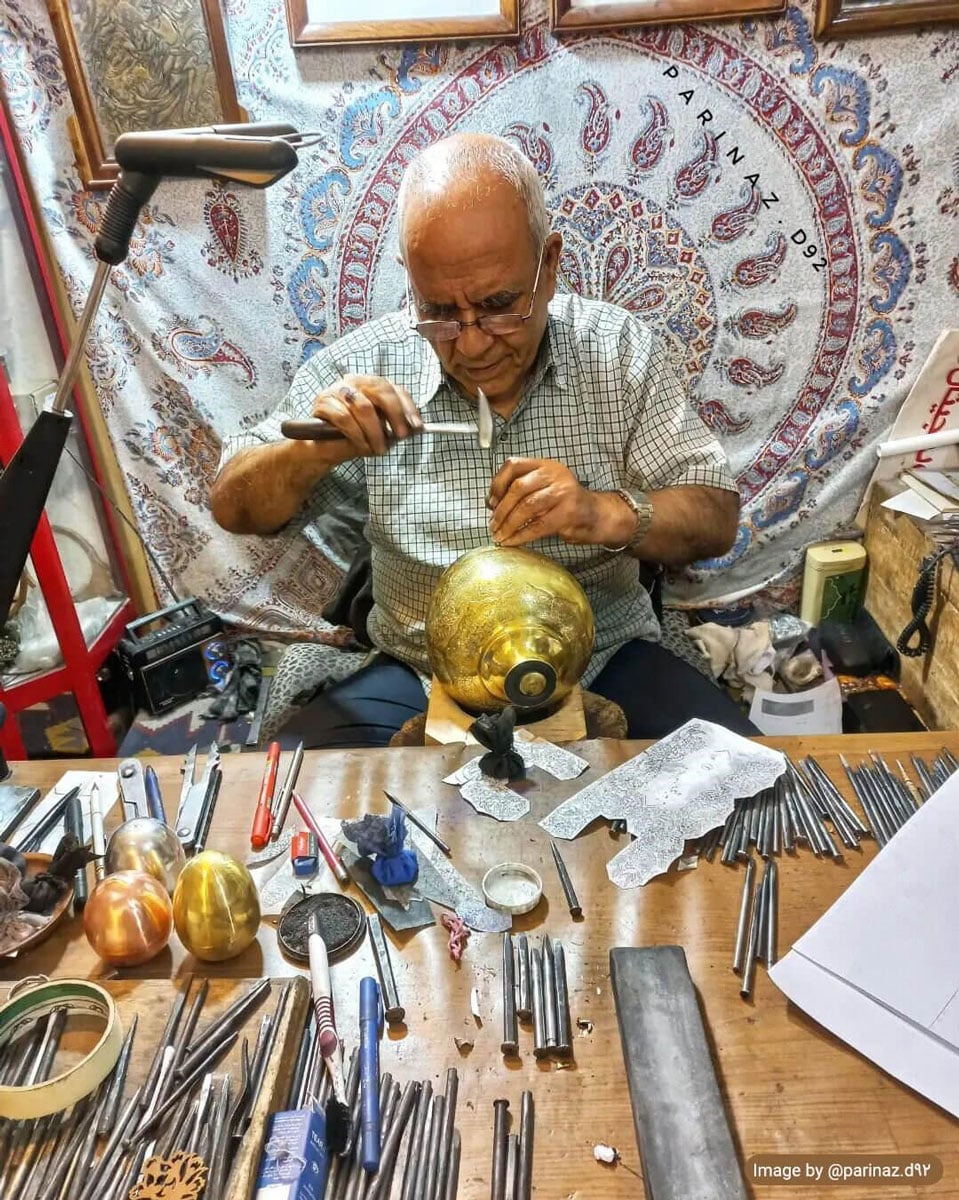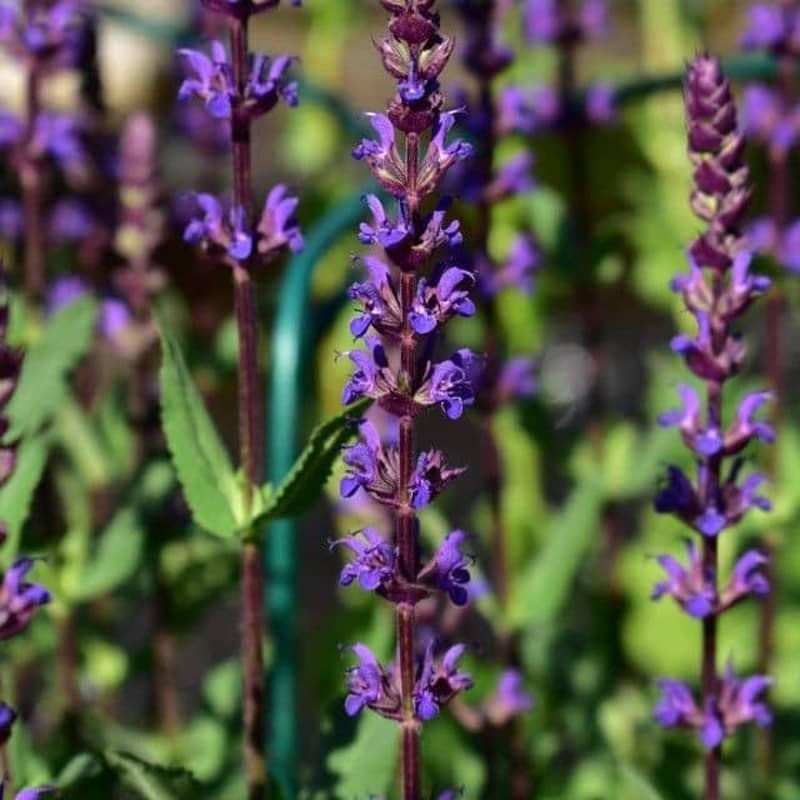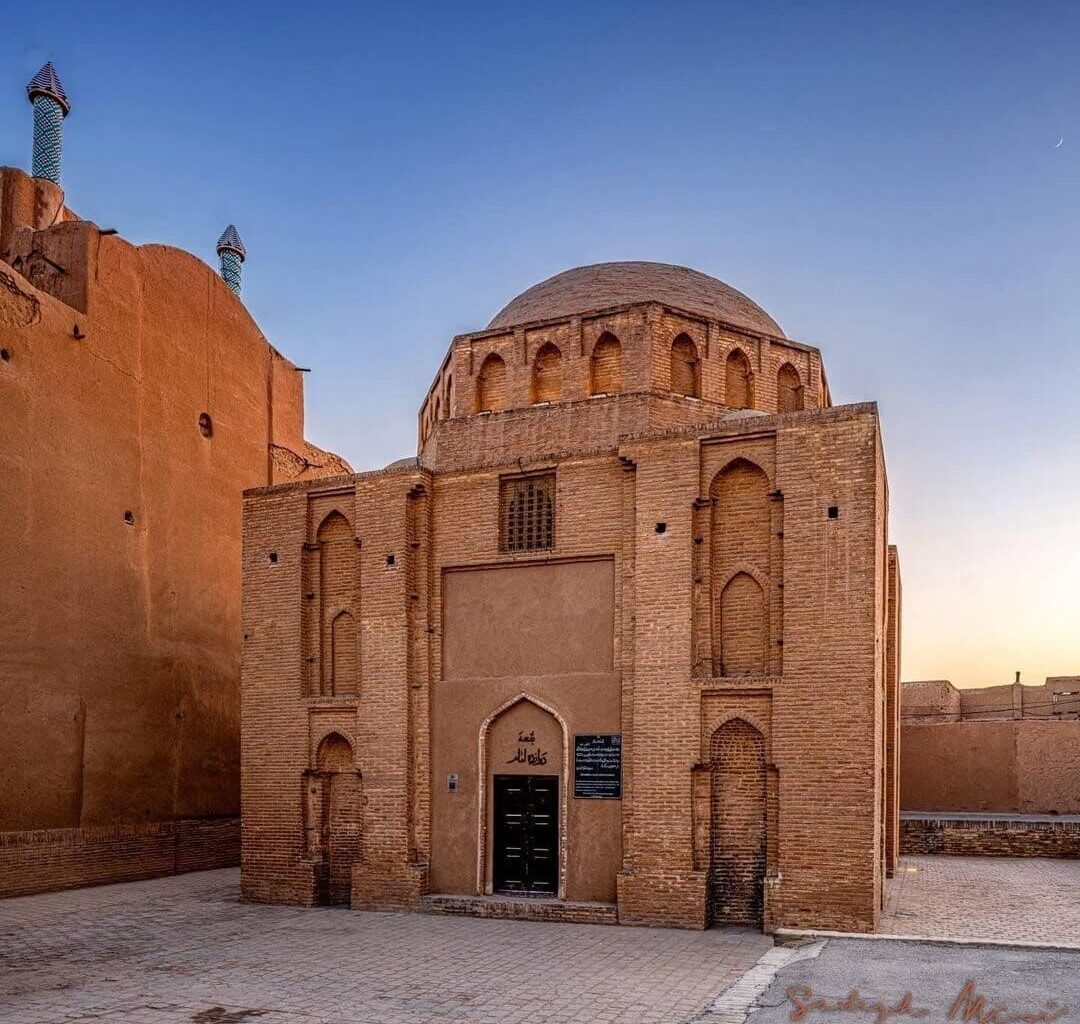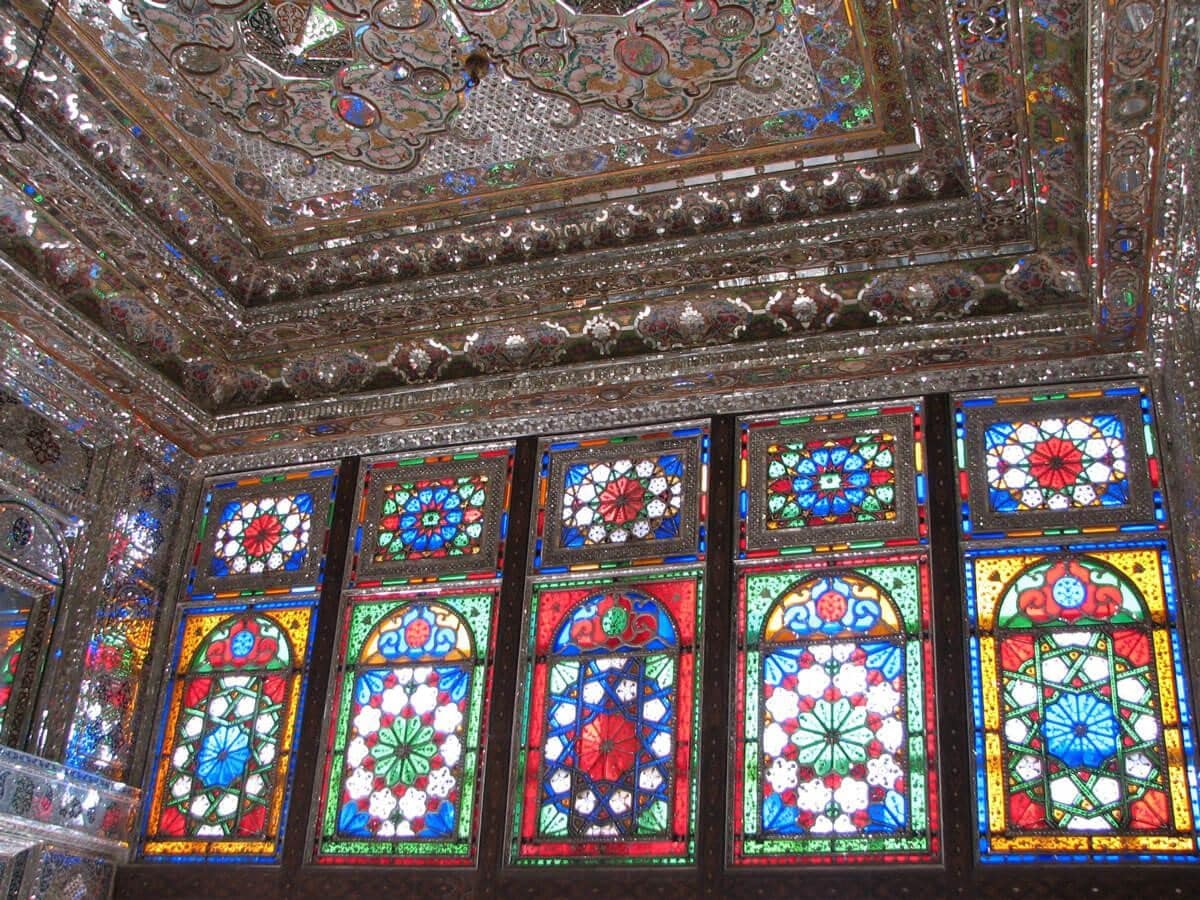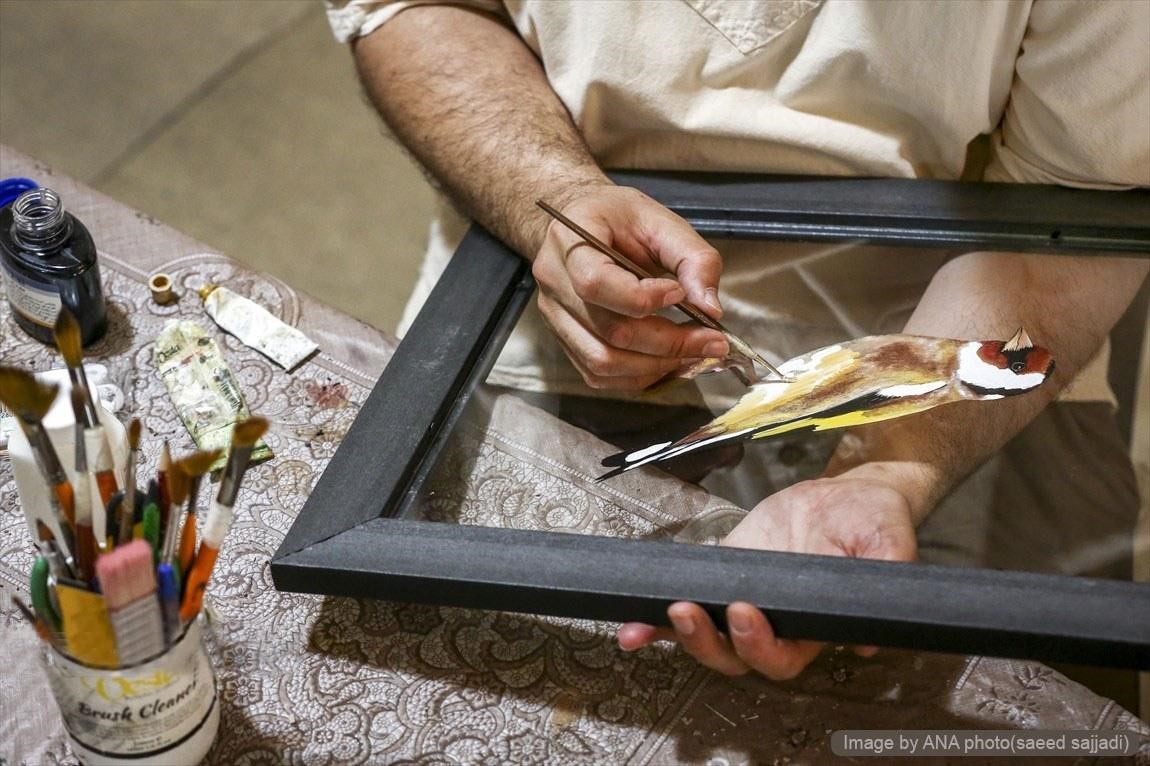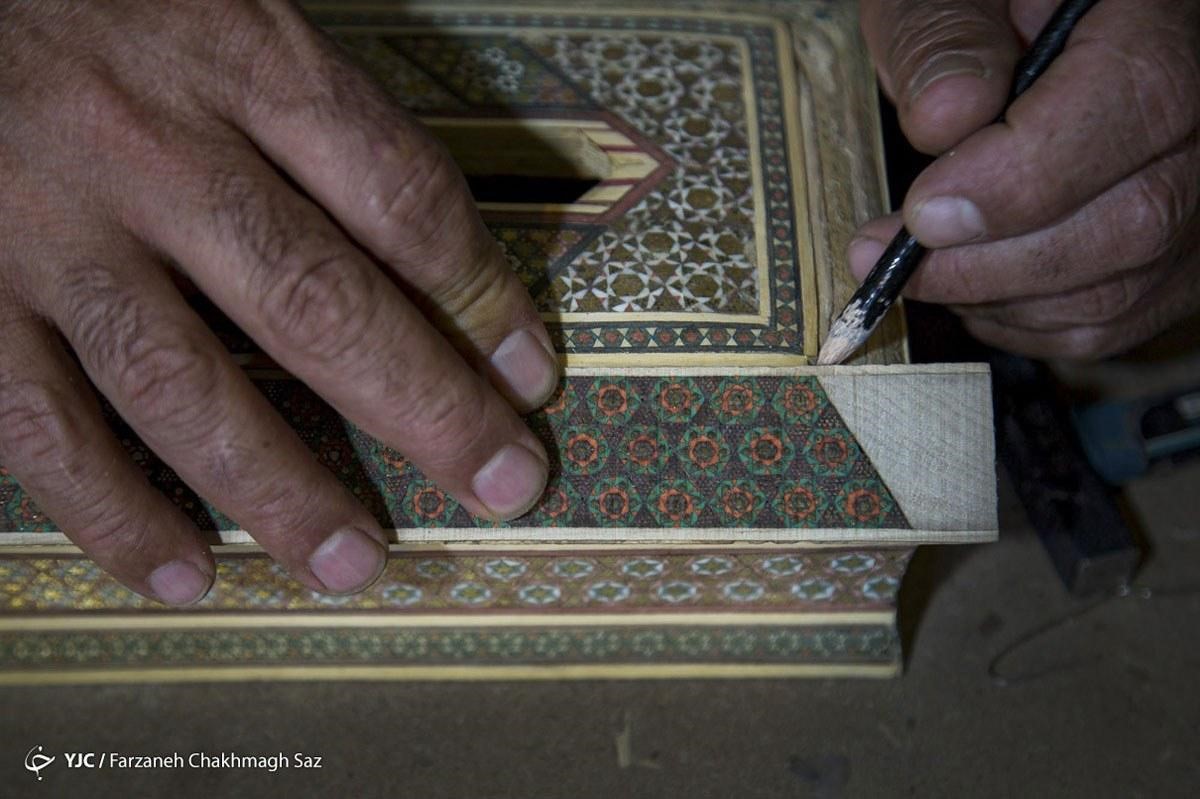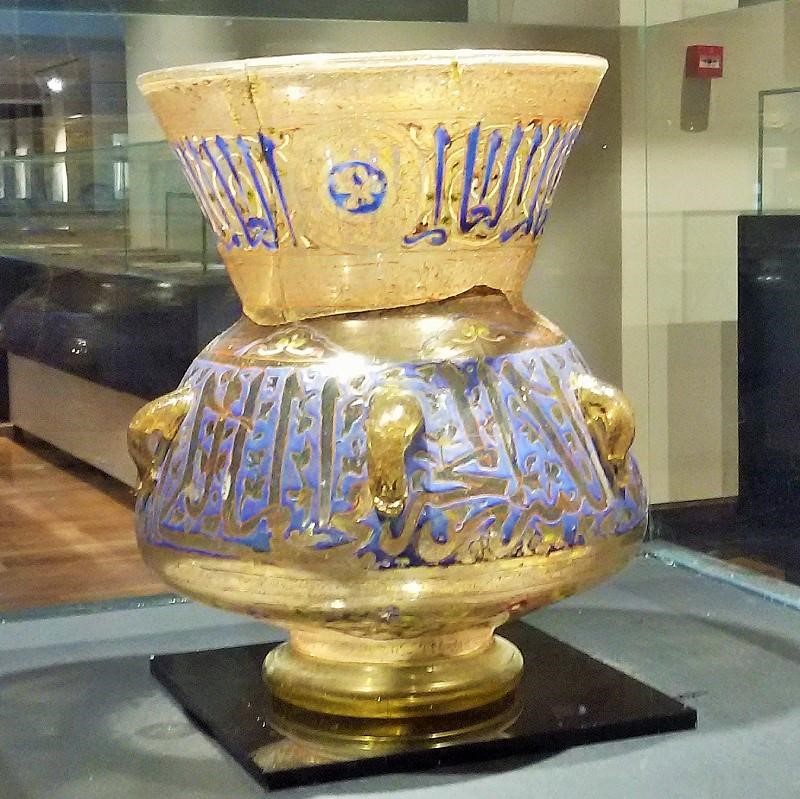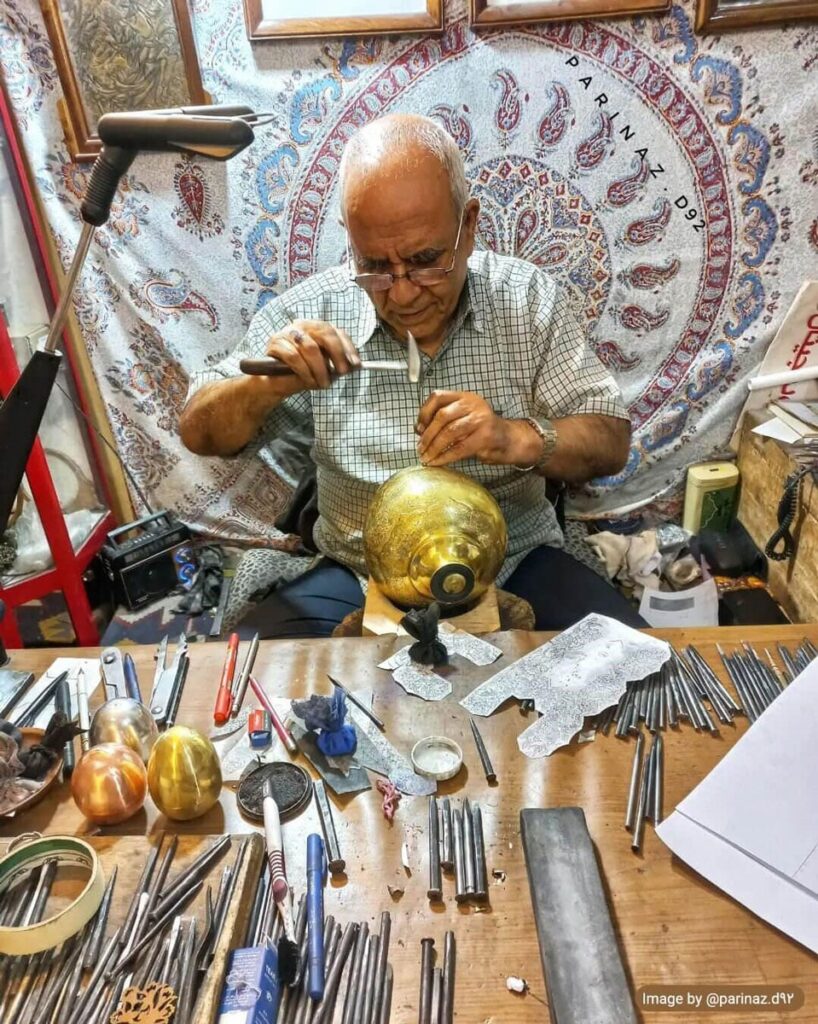
Toreutics in Iran is one of the sub-branches of metalworking handicrafts. In this traditional practice, the artists engrave flower and bird motifs, Persian poems, and Quranic verses on various metal containers. Among the most famous artists whose works have manifested in this branch of Iranian handicrafts, we can mention the designs of Mahmoud Farshchian, a miniature painter, and Mr. Alamdari, a master of toreutics.
Origin and History of Toreutics in Iran
According to archaeologists, the origin of this art goes back to the time of the Scythians, a nomadic tribe of Iranian descent who lived before the Achaemenids. Of course, because there are no remaining works from the mentioned era, its origin cannot be attributed to the time of the Scythians with much certainty.
Also, some experts believe that a few thousand years BC, copper metal was used in Iran and the Near East. They believe that at the end of the second millennium and the beginning of the first millennium BC, the art of metalworking was common in different regions of the Iranian plateau. These regions include:
- North and northwest Iran and the southern borders of Mazandaran.
One of the artifacts belonging to this era is the “Golden Bowl of Hasanlu”. This gold cup was discovered in 1958 and features magnificent designs.
There are also artifacts from the period of the Medes, several of which have been discovered in Azerbaijan province. After the fall of the Medes and during the Achaemenid rule, the art of toreutics developed extensively and became one of the main decorative metalwork styles. This art peaked in various practices such as casting, hammering, inlaying, etc.
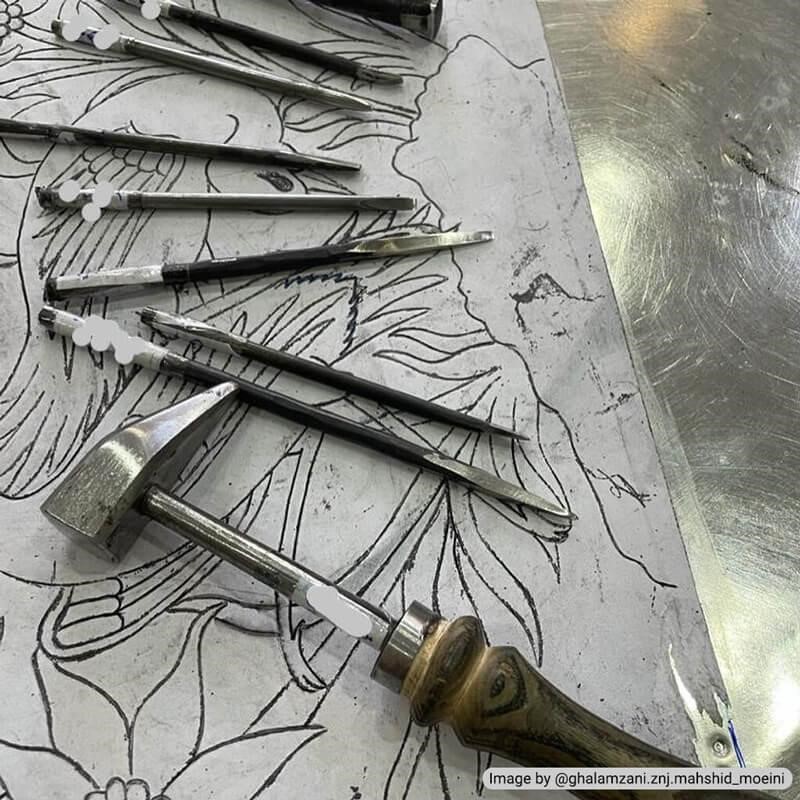
Unfortunately, due to Alexander’s attack on Iran and the burning of Persepolis, many of the toreutics artifacts in Iran were also lost. Today, a handful of metalwork artifacts belonging to the Achaemenid era are kept in the National Museum of Iran. These works include:
- Two silver tablets weighing 4 kg and a golden tablet weighing 5 kg.
This ancient Iranian handicraft continued to flourish in the Seleucid, Parthian, and Sassanid periods and after the arrival of Islam. In the early Islamic era, toreutics handicraft in Iran was an imitation of the Sassanid styles. Gradually, artists engraved verses from the Qur’an on the artifacts and thus created a new style.
The art of toreutics in Iran was not limited to these periods and continued during the following periods. The zenith of this art can be attributed to the Safavid period, but during the Qajar rule, this art began to diminish.
What is Toreutics?
This field of handicrafts refers to “engraving decorating motifs on various metals, including silver, copper, gold and brass” using a hammer and a steel pen.
Also, embossed toreutics is a special style of handicraft art that creates a three-dimensional motif. This method is advantageous in making shrines for holy tombs.
There is another type of embossing style that is slightly different and is known as “semi-embossing”. In this style, regular carving pens are used instead of special embossing pens.
The Difference Between Toreutics in Iran and Metal Carving and Cold Forming
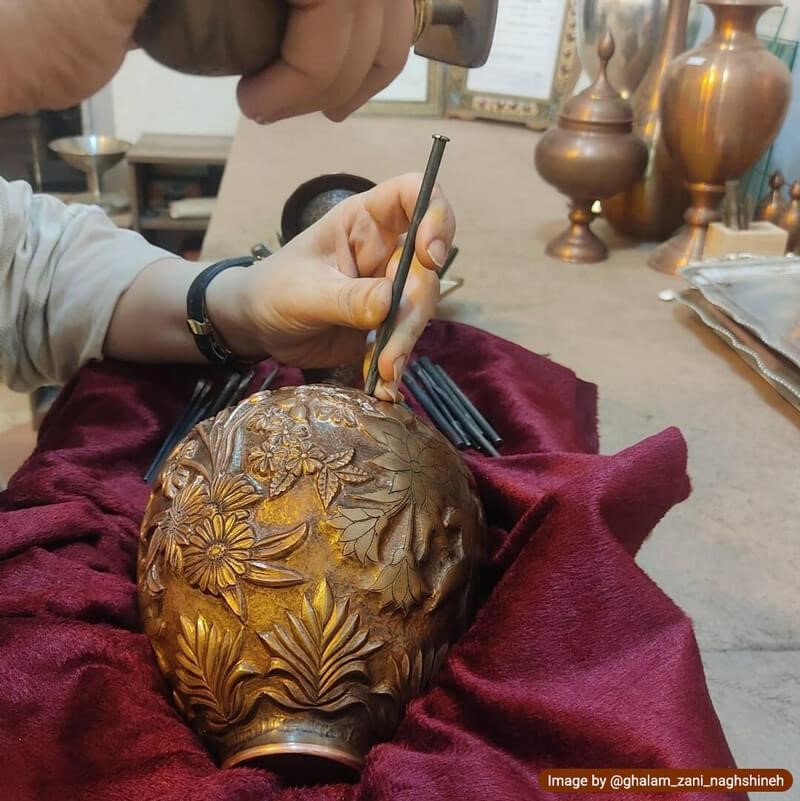
- In toreutics, the artist creates embossed and debossed traces to form a three-dimensional design or pattern. While in metal carving, an embossed pattern is created.
- In toreutics, the artist uses several types of carving pens to create patterns. While in carving, only one type of pen is used.
As it was stated at the beginning, toreutics in Iran is considered a traditional art that is included in the category of handicrafts as a sub-branch of metalworking.
In the field of metalworking, there is another branch called Davatgar (cold forming), which is the manufacture of various containers by a cold-forming method that is entirely different. The dishes made by cold-forming artisans are entrusted to toreutics artists to decorate them by carving decorative patterns.
Toreutics on Copper Artifacts
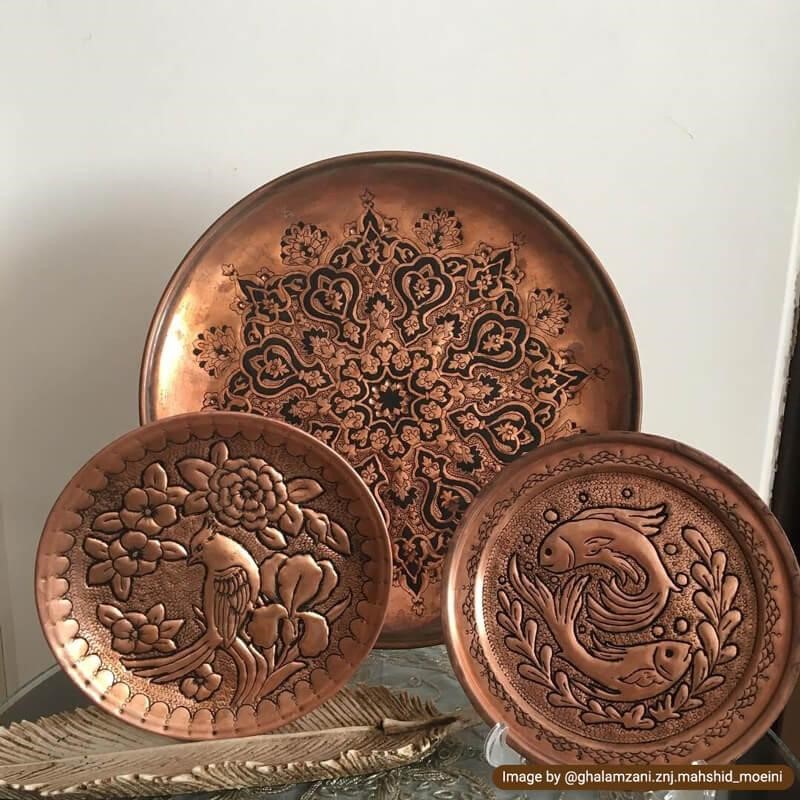
Toreutic art on gold and silver artifacts increases the artistic value of the final product, but applying it to copper artifacts has a unique value. Because many people are very fond of copper metal and prefer this art on copper surfaces because of its aesthetic.
Copper vases, trays, tableau, etc. are among various copper artifacts suitable for the application of this field of handicrafts. These dishes attain a stunning view with the engraving of Nastaliq calligraphy designs.
Toreutics on Silver Artifacts
The peak era of toreutics on silver or “silversmithing” can be attributed to the Safavid period. In this period, the use of all kinds of jugs and bowls with different patterns was highly popular.
In addition to that, illumination patterns, arabesque designs (decorative patterns in the form of leaves and ivy), and Nastaliq and Thulth scripts were common in this art during the Safavid era.
Where Are the Best Toreutics Workshops in Iran?
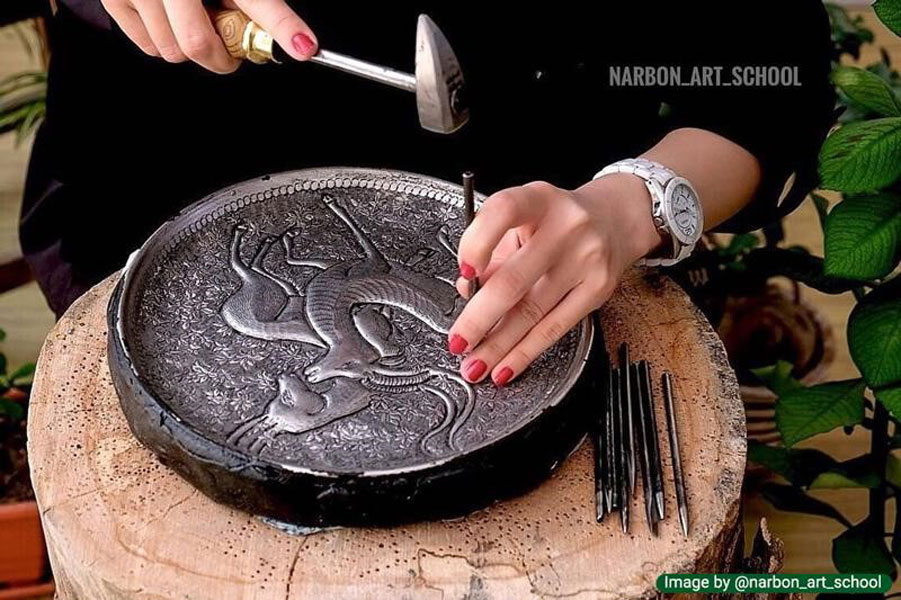
The city of Isfahan is known as one of the most important Iranian centers of this art. The number of active handicraft workshops in this city is more than in any other city, and most of them are dedicated to copper and brass toreutics.
The city of Isfahan is known as the “capital of culture and art” due to the prevalence of various artistic endeavors. This is highly valued and respected in this city.
Visit Traditional Toreutics Workshops in Iran
Toreutics is one of the traditional Iranian handicrafts, and most of its workshops are in the city of Isfahan. Destination Iran Iran invites you to visit these workshops and buy their products following the principles of responsible tourism. Supporting these handicrafts through your purchases is effective in maintaining and revitalizing these industries.






